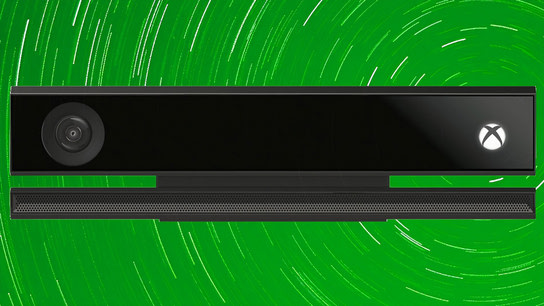The Kinect was an important part of Microsoft’s strategy for the Xbox One when it launched more than two years ago. I got the Kinect along with the console at launch, but now I’ve unplugged the intrusive sensor system completely ignored by Microsoft and its partners.
Show me the games!
There are no games for Kinect on Xbox One that I nor anyone else would ever want to play. Microsoft touted all the technology enhancements of the Kinect 2 with the Xbox One system launch, but game developers have turned a deaf ear.
Adding insult to injury, Microsoft’s own exercise title Xbox Fitness seems to have scared off third-parties that successfully made good and engaging exercise games for the old Xbox 360 console.
Xbox 360 had fun games for Kinect that I enjoyed playing. I spent hours playing the old exercise game titles like Your Shape: Fitness Evolved and Nike+ Kinect Training.
I’d a lot of fun shouting “Grenaaade!” at Halo: Anniversary Edition (even though it only worked somewhat unreliably), and pod racing and even dancing in Kinect: Star Wars. Sure, I looked like a complete idiot doing all of these things but it was fun nonetheless.
On Xbox One there aren’t any games to talk about. Xbox Fitness, Microsoft’s exercise game/platform for the Kinect 2 that was announced with the platform, is just a collection of expensive exercise videos with professional trainers with the Kinect sensor judging you while you watch.
The exercise games on Xbox 360 felt personalized and motivating with the Kinect sensor adding value as a vital part of the experience. You’d get comments and suggestions on your performance and motivational shout outs from your personal trainer if you started to hang back.
Compared to that, the Xbox Fitness platform makes you feel like a housewife moving about in front of the TV while watching recordings of other people exercising. There’s no personalization nor engagement at all from the system and the Kinect feels completely redundant.
I’ve had more fun with The Playroom, a demo game for the PlayStation 4 Camera, than with the Kinect for Xbox One. Considering that I’ve probably played more than a hundred times more on the Xbox One than the PS4, that says a lot.
Stares at me constantly, but doesn’t know who I am
Xbox uses the sensors in the Kinect for logging in players using person and face recognition software. This feature works great for my significant other and friends, but it struggles even identifying me as a person.
I’m not sure if I ought to be offended or happy about its inability to recognize me, but when it believes bar stools and blankets to be “guests” I kind of feel left out of the fun.
The Xbox’s voice commands and Cortana aren’t available outside English speaking nations. I’ve to set the console region setting to the United States or Great Britain to use voice commands in English.
Unfortunately, changing the region also makes some of your locally purchased games and media unavailable and you can’t make new purchases in a foreign digital store. You are more or less stuck with using your correct region and thus locking many players out of any voice interaction and the Cortana voice assistant.
The Kinect is already a joke in regions where the full feature set and voice recognition is available. To the rest of the world, the Kinect is nothing but an expensive paperweight and ineffective voluntary surveillance system. Even when voice recognition isn’t available in your language, the microphone is still always on and listening.
There’s a constant low trickle of data connections between the Xbox One and Microsoft’s servers even when the console claims to not understand you. It’s enough to make anyone paranoid.
Don’t get me wrong, I don’t mind voice-controlled user interfaces (except when I’m out in public) and I rather enjoy writing using dictation. However, I want the speech-to-text processing to happen locally on my own system. There’s no need to send my spoken words off to a server farm for processing and record-keeping.
Hand gestures weren’t all that great as the sensor had difficulty differentiating between when I was just stretching and trying to interact with the console. However, you could wave your hands around while looking for the controller, and usually start the game or app you were going to launch.
They worked for the most part and was at least something you could use the Kinect for. All gesture-based navigation on the Home screen was removed entirely when Xbox One got the Windows 10 update in November 2015. Important third-party apps like YouTube or even Microsoft’s own Groove Music service never bothered implementing it either.
Good riddance
The Kinect is a constantly listening machine invited into the living room to provide convenience and entertainment. Without any games, it doesn’t provide any entertainment, and without working gesture and voice support, it doesn’t offer any convenience either.
It’s a much better experience to always have to login manually from the menu than to rely on Kinect. Waiting for the Kinect to maybe recognize me and log me in is a frustrating experience involving a lot of cursing and waving arms that often doesn’t work. Navigating the menus and choosing Login is just something you’ve got to do so you avoid the growing frustration when it doesn’t just work on its own.
I’ll leave the Kinect at its center position on the media center bench, for now to serve as an intimidating piece of surveillance art-installation. It goes well with the surrounding furniture anyway. However, I’ve disconnected the power and cables. It’ll remain like that until there’s a massive new software update that makes it awesome or at least a few games are released that will make it interesting again.
